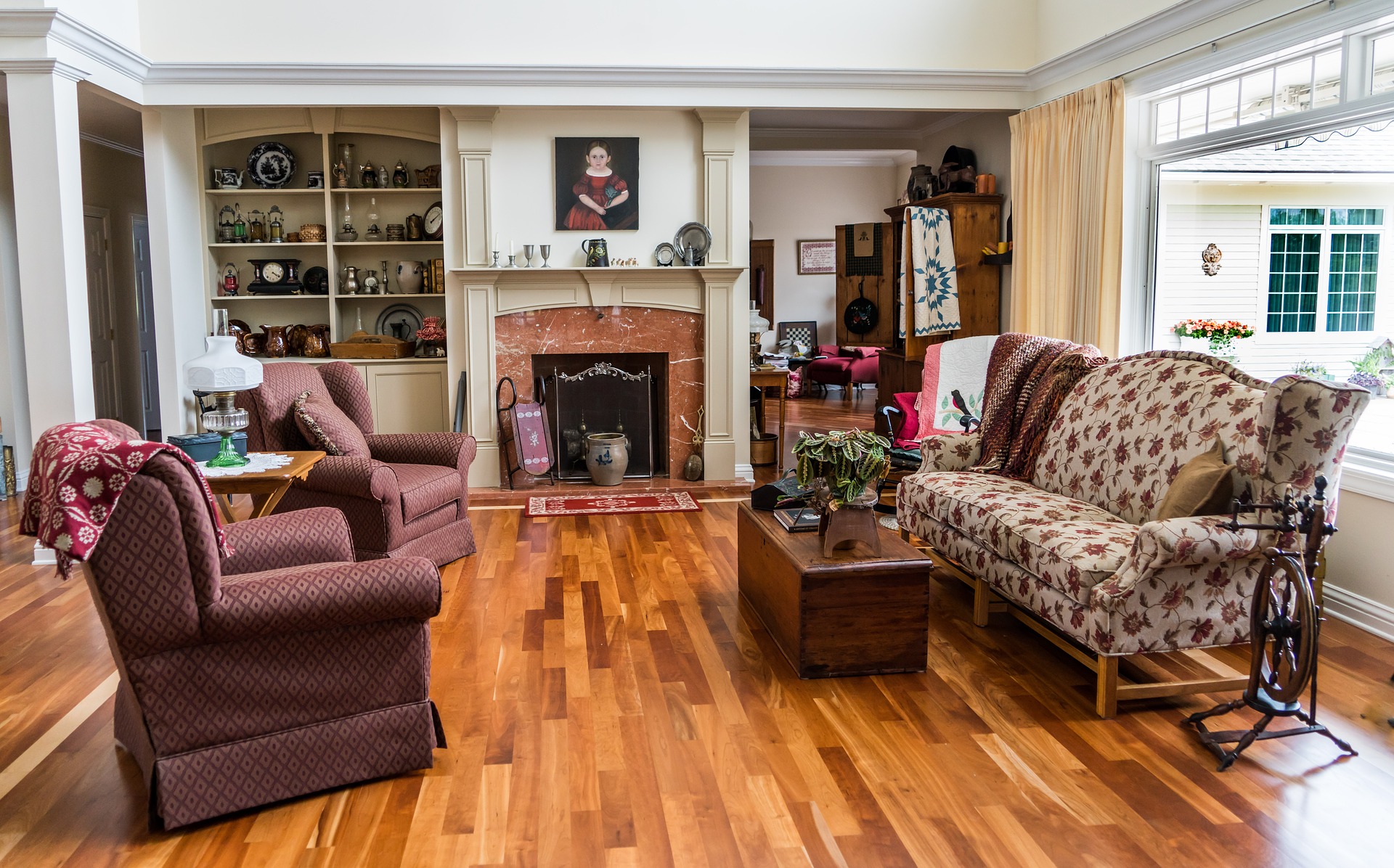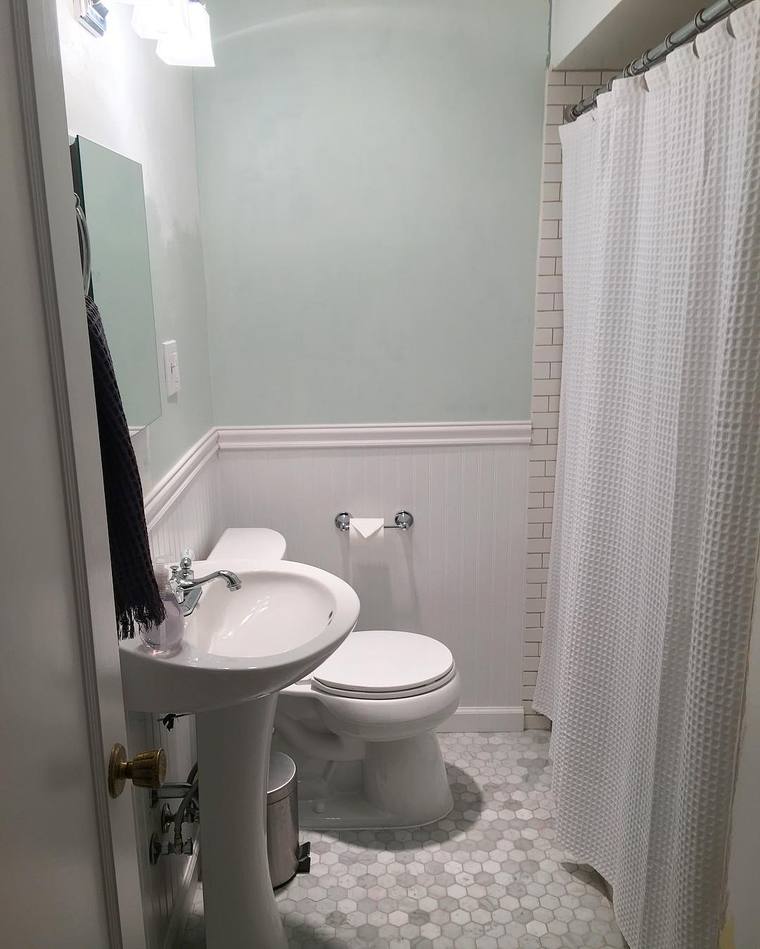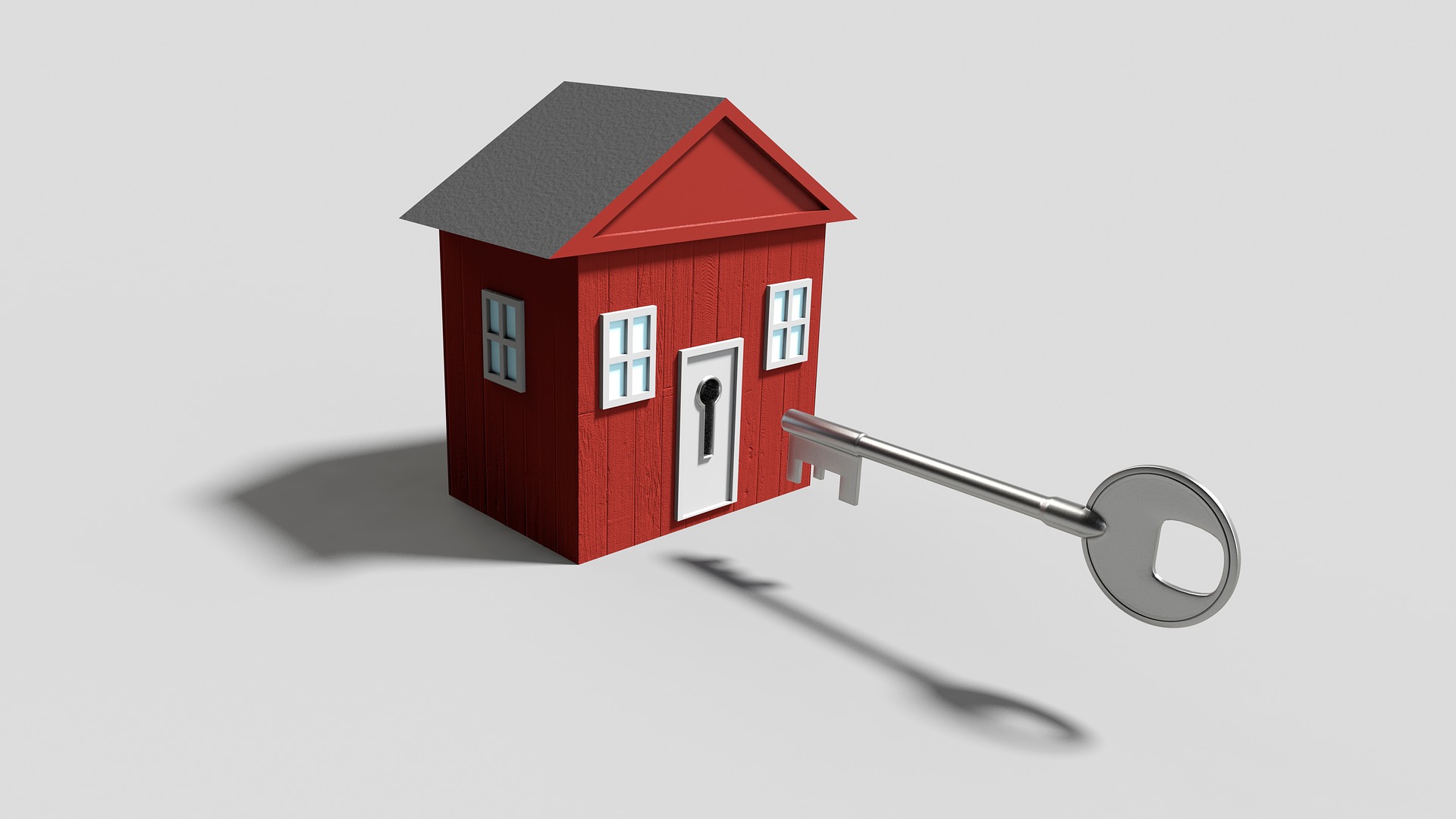Home Security Systems: Protecting the People and Things You Value the Most

Home Security Systems: Protecting the People and Things You Value the Most
With warmer weather come open windows and extended vacations, so it should come as no surprise that the highest percentage of home burglaries happen during the summer months. With that in mind, now is a good time to start thinking about the security of your home. From old-school security tricks to new digital home monitoring tools, there are many options when it comes to keeping our homes safe. Read on to learn more about how you can modify your home and keep it safe from intruders.
Security bars and gates:
Sometimes the simplest security is just deterring people from trying to get in. While security bars across windows are a great way to keep intruders out of your home, they can be a real eyesore. Luckily, there are now options for decorative security bars that simultaneously protect your home while enhancing its beauty.
Upgrade you locks:
A poorly installed deadbolt can make it easy for an intruder to kick in your door. Start by making sure that your doorframes are in good condition and then look into getting a higher quality deadbolt. You’ll find everything from classic models with keys, or digital options that require passcodes or a fingerprint.
It’s also a good idea check all the locks on your windows. Some older models are easy to jimmy open with a little wiggling. For ground floor windows, you may want to consider double locks. It goes without saying, leaving windows open during the summer is a bad idea – especially those that can be easily accessed.
Exterior and interior home lighting:
Having your exterior lights on timers or motion sensors is a good way to deter nighttime snoopers. Add sensor lights to key entry points on your home, including the front door, back door, and/or basement entries. If you have an unused side yard, consider lighting there too. Keeping your home lit makes unwanted visitors weary of being seen.
If you will be gone from your home for an extended period of time, consider using timed lighting options in your home to make it appear someone is around. You can select timers for bedrooms or living areas. Also, you can program a radio to turn on and off for sound.
Alarm systems:
If you are considering an alarm, you have an array of options that vary from self-install motion detection kits to full-service home security systems. If you choose to do-it-yourself, you will want to install motion detectors on doors and windows – especially those that can be easily accessed on the ground floor. In most cases, these kits also offer a 24 hour call service for an extra fee.
Full-service security systems can include everything from an alarm system and panic buttons to and integration with your smoke detectors/ fire prevention system. These services are expensive up front, but usually have a reasonable monthly rate. And keep in mind, having a home security system installed can also reduce your insurance rates.
If installing an alarm system is cost-prohibitive or does not fit your lifestyle, consider purchasing stickers and a sign that state that your home is monitored by a trusted security system, and place them so they are visible at every entrance.
Security cameras:
Security cameras are readily available for home installation. You can install these in prominently viewed places to deter burglars. There are do-it-yourself install options, and professional systems that come along with monitoring services. There are even options that will work with your smart phone. If the cost for security cameras is too steep for your budget, you can purchase fake cameras to act as a visible deterrent for intruders.
Build your community:
Programs like Neighborhood Watch are very successful in some communities, by creating an environment where everyone is looking out for each other. Building close-knit relationships with your neighbors can go a long way in making you feel safe at home. Whether this is through a formalized program, or a shared agreement with your community, developing relationships with your neighbors is a great way to keep your home safe.
Sometimes the best part of security systems is the peace of mind that comes with knowing your home is protected. Many of our personal items can be replaced thanks to homeowners insurance, but you cannot put a price on feeling safe at home. How do you keep your home safe?
For more information on Windermere Evergreen please contact us here.
Preparing Your Home for a Winter Wonderland

 As they say, winter is coming, and while it is tempting to curl up and hibernate in bed for the next few months, you shouldn’t put off these important home maintenance duties.
As they say, winter is coming, and while it is tempting to curl up and hibernate in bed for the next few months, you shouldn’t put off these important home maintenance duties.
Clean and check the gutters: While you are on the roof hanging holiday lights, make sure your gutters are clear of leaves, secured to the house, and in good condition. If you do find problem spots, seal, secure, and make note to fix these in the spring. You want to divert water away from your home.
Insulate external water sources: In cold climates pipes can freeze, which can then lead to cracked pipes and flooding. Bring hoses and sprinklers inside for the winter and use insulation to wrap external faucets. Insulating interior pipes can help prevent disaster. If you don’t have insulation, you can keep a faucet dripping during particularly cold days so water is flowing through the pipes.
Check your water heater: One way to save money during the winter months is to wrap your water heater, so it doesn’t have to use as much energy to keep the water hot in a tank. You should check on your heater to make sure it isn’t leaking and in good repair regularly.
Interior insulation: Keep the heat in and the cold out with increased insulation in your attic and basement. This is an investment, and best done before the winter hits, but can make a big difference in how warm your house feels and how high your heating bill goes.
Check for cracks and leaks: Do you feel a draft? Check the sealing on your windows and doors. You can add weather stripping and silicon to seal these leaks. Foundations can leak as your home settles, so you should also check your basement for water coming through the walls, pipes, and older windows. You will want to seal these appropriately to minimize damage from flooding or mold.
Weatherize your windows: Your windows can be a great source of heat leakage depending on their age and condition. If you have older windows, you can use a clear film to help insulate them during the winter. If you don’t want to film the windows you can install extra thick drapes or curtains to help keep the interior of your home warm.
Check your heating system: What is one thing gas fireplaces, wood burning stoves, and central air heating systems all have in common? They all need to be cleaned and maintained. Check and clean your indoor heating system thoroughly. If you use an old fashioned wood stove, make sure there are no leaks and that all soot build up or nests are removed. If a furnace is what you have remember to change the filters as recommended or clean out your reusable filters.
Check your chimney with care: Nothing is as cozy as sitting by the fireplace during the winter, but use with care! Have your chimney checked by a professional to ensure that it’s in good condition and clear of critters or nests. You can also use a creosote log at the start of the season to help break down any old residue.
Invest in home security: The holidays are prime times for burglars looking to score some extra gifts so make sure your home is safe and secure at all times. Check your locks to make sure these are secure and consider a home security system with visible cameras to act as a deterrent. Keep evidence of big gifts hidden from view too. And make sure you discreetly get rid of any large boxes that might alert a prowler that you have new big-ticket items in your home.
Deck the halls and be merry: Decorate your home and prepare for guests. If you have a Christmas tree, keep it from drying out (and creating a fire hazard) by watering regularly. Keep decorative candles and menorahs away from children and flammable materials. You may want to consider battery powered candles, these can be a safe alternative to traditional candles.
For more information on Windermere Evergreen please contact us here.
Affordable Tips To Up Your Home’s Curb Appeal

 You’ll never have a second chance at a first impression, so let’s make it count! When it comes to upping your home’s curb appeal, there are plenty of small changes you can make that have a big impact. And best of all, you don’t need to call in the pros or spend a fortune to get beautiful results. Below are some helpful and affordable tips.
You’ll never have a second chance at a first impression, so let’s make it count! When it comes to upping your home’s curb appeal, there are plenty of small changes you can make that have a big impact. And best of all, you don’t need to call in the pros or spend a fortune to get beautiful results. Below are some helpful and affordable tips.
A Well-Maintained Yard
Mowing: The first step to a well-manicured lawn is to mow it regularly. The experts recommending mowing high because mowing it too short can damage the grass and allow weeds to set root.
Weeds: To prevent weeds like crabgrass use a pre-emergent herbicide in early spring. These herbicides manage the weeds by stopping the seeds from sprouting in your lawn. Broadleaf weeds like dandelions can be stopped by applying granular weed control products.
Feeding: Lawns consume mostly nitrogen, so look for mixes of fast and slow release fertilizers; they will feed your lawn over time while keeping it lush and green.
Watering: Nighttime watering can result in long spans of moisture on the blades, potentially exposing your grass to disease. Consider watering your lawn in the morning – the sun helps dry out the blades throughout the day.
Flowers: You can quickly and affordably dress up your yard with colorful pre-made flower pots and containers. When placing your flower pots and containers remember that asymmetrical arrangements and staggering plants will provided the liveliest setting.
Dress up the Front Door and Porch
Paint: A fresh coat of paint in a pop color can give your home a well-deserved facelift. If you are hesitant to add a bright color to your front door, check out our article Energize Your Home This Winter With Bright Hues.
Replace Old Hardware: Clean off any dirty spots around the door knob, and use a metal polish on the fixtures. Change out house numbers for an updated feel, put up a wall-mounted mailbox, or add an overhead light fixture. Keep in mind that well thought through elements, instead of mix-and-match pieces, will add the most curb appeal.
Create Perfect Symmetry: Symmetry is one of the simplest design techniques to master and is the most pleasing to the eye. Maintain symmetry by flanking your front door with two sidelights (just make sure that your hardware matches); find two urn planters or a unique visual detail to put on either side of your door.
For more information on Windermere Evergreen, please contact us here.
DIY: Giving Our Fireplace a Facelift


A story of a DIY project… While we were willing to do some major updates to the bathroom, plumbing and electrical, we decided to pick a few areas of our 1940s fixer to do some smaller, mostly cosmetic updates. One of these projects included giving the fireplace a little facelift to bring it into this century.
When the house was built, we believe the fireplace was a simple plaster build-out. At some point, the original owners of the home laid on these tan tiles in a decorative pattern around the fireplace. They may have added the wooden mantel piece, as well. And in the 70s, perhaps they added the black and bronze fireplace cover. Not completely sure as this home was an estate sale (which means the owner either passed away or moved into an assisted living community — and in this case, we know the owner passed away in her 90s in another home).
We were told that there is gas available on the street so at some point, we’ve love to add a gas insert for a gas fireplace and stove. Rumor has it, Seattle may outlaw burning real wood in fireplaces within the next couple of years. But that gas fireplace update will take more time, money and permits. So for now, we paint.
After the contractors left, we noticed some brown/yellow stains on the plaster facing. My wife, our resident painter, tried to paint over the stains. Even after two or three coats, the marks were still pretty apparent. We waited until we could have our young daughter, out of the house before trying to prime the fireplace with industrial strength primer. The guy at the hardware store even suggested buying a “throw-away” paintbrush for a few bucks because to get this primer off of a normal brush would take more industrial strength cleaner. Two coats of that primer stuff and voila! Stains hidden.
After the primer dried, she painted the tiles (sorry previous owners!) and fireplace face a bright white which instantly modernized the whole room. We contemplated painting the black half circle that’s part of the fireplace cover but decided against it, mostly because we had already put our paint supplies away and #tired.
The fireplace has some areas that need some grout repair and one of the tiles is cracked (and has been for God-knows how long) but this was a nice, easy win. When you’re doing home renovations, not much feels easy so three cheers for a white fireplace that only required three trips to the hardware store.
For more information on Windermere Evergreen and our team, please contact us here.
Seven Phases of Home Renovations

The 7 Phases of Home Renovations:
Phase 1: Get super pumped about an idea. Pin, pin, pin on Pinterest until you’re bursting with excitement. Tell everyone about your amazing project.
Phase 2: Collect materials. Realize things cost a lot. Begin project fueled by coffee, nervous anticipation and adrenaline.
Phase 3: Get halfway through the project. It doesn’t look exactly like your Pinterest board but it’s still cool. Realize you haven’t showered or shaved in +/- 3 days. But it’s all good because you’re 50% there!
Phase 4: There’s visible progress but it’s not totally done. It looks done on the Instagram photo though! But in reality, the project is about 85% complete and it bugs you every time you see that one grout line that needs a little attention or that one corner that needs a little touch up paint. It’s okay though, you’ll get to it this weekend.
Phase 5: Weeks have gone by. The blisters on your hands have healed. You stop noticing the grout line that needs filling or the wall that needs paint. You’re busy enjoying the house and admiring your clean fingernails.
Phase 6: Write a blog about how you’re still not done with that one bathroom you started two months ago.
Phase 7: Complete project, details included. Toast to celebrate. Post more photos to Instagram. Start dreaming of a new project. Pin, pin, pin…
Some people may say the hardest part of a renovation is starting the project. We say it’s that last pesky 5%. We’ll get it done . . . eventually.
For more information on Windermere Evergreen and our team, please contact us here.
 Facebook
Facebook
 Twitter
Twitter
 Pinterest
Pinterest
 Copy Link
Copy Link









 Over the last few years, we have seen an increase in homeowners choosing to become landlords rather than placing their homes on the market. In deciding whether or not becoming a Landlord is right for you, there are a number of factors to consider, but primarily they fall into the following three categories: Financial Analysis, Risk and Goals.
Over the last few years, we have seen an increase in homeowners choosing to become landlords rather than placing their homes on the market. In deciding whether or not becoming a Landlord is right for you, there are a number of factors to consider, but primarily they fall into the following three categories: Financial Analysis, Risk and Goals.
